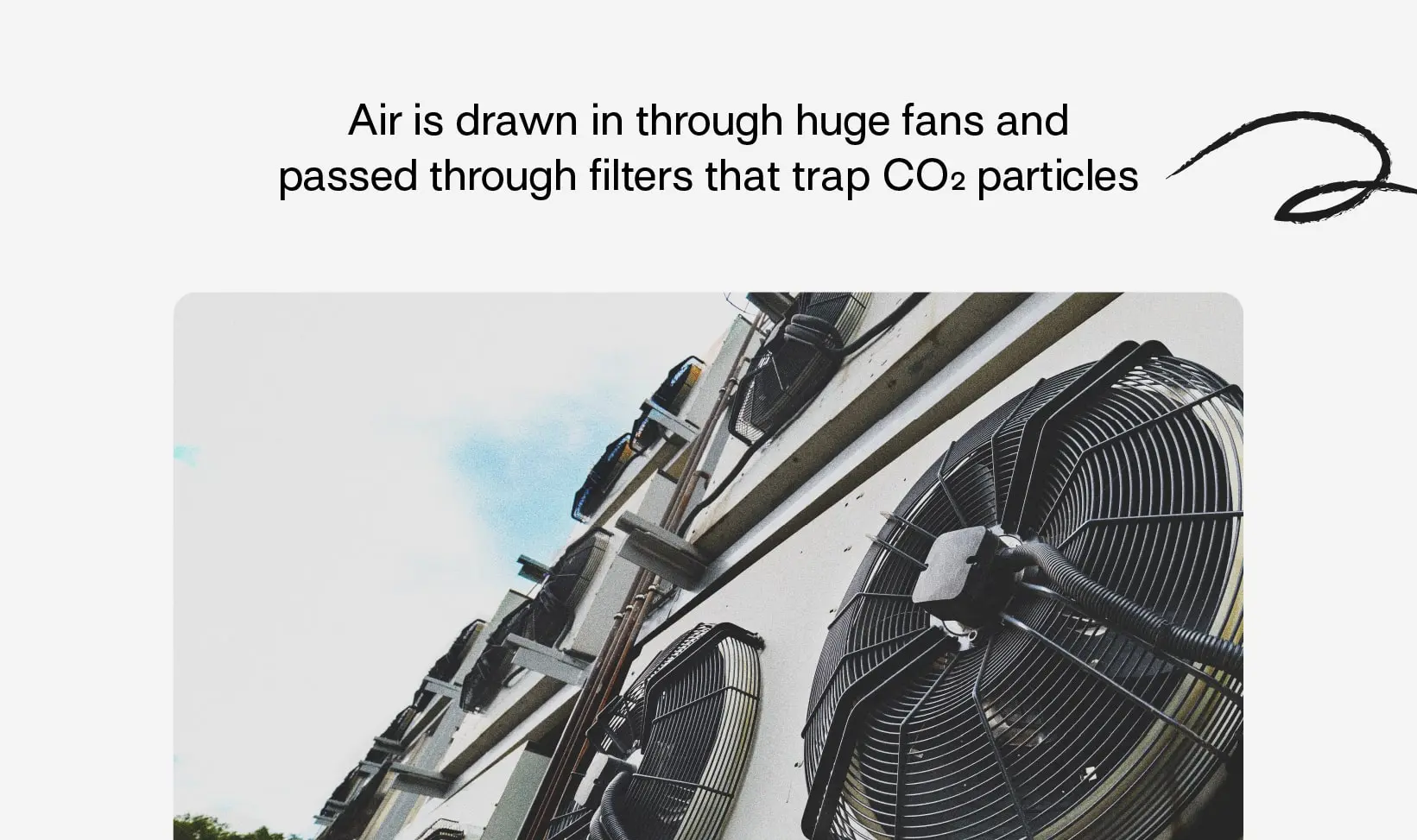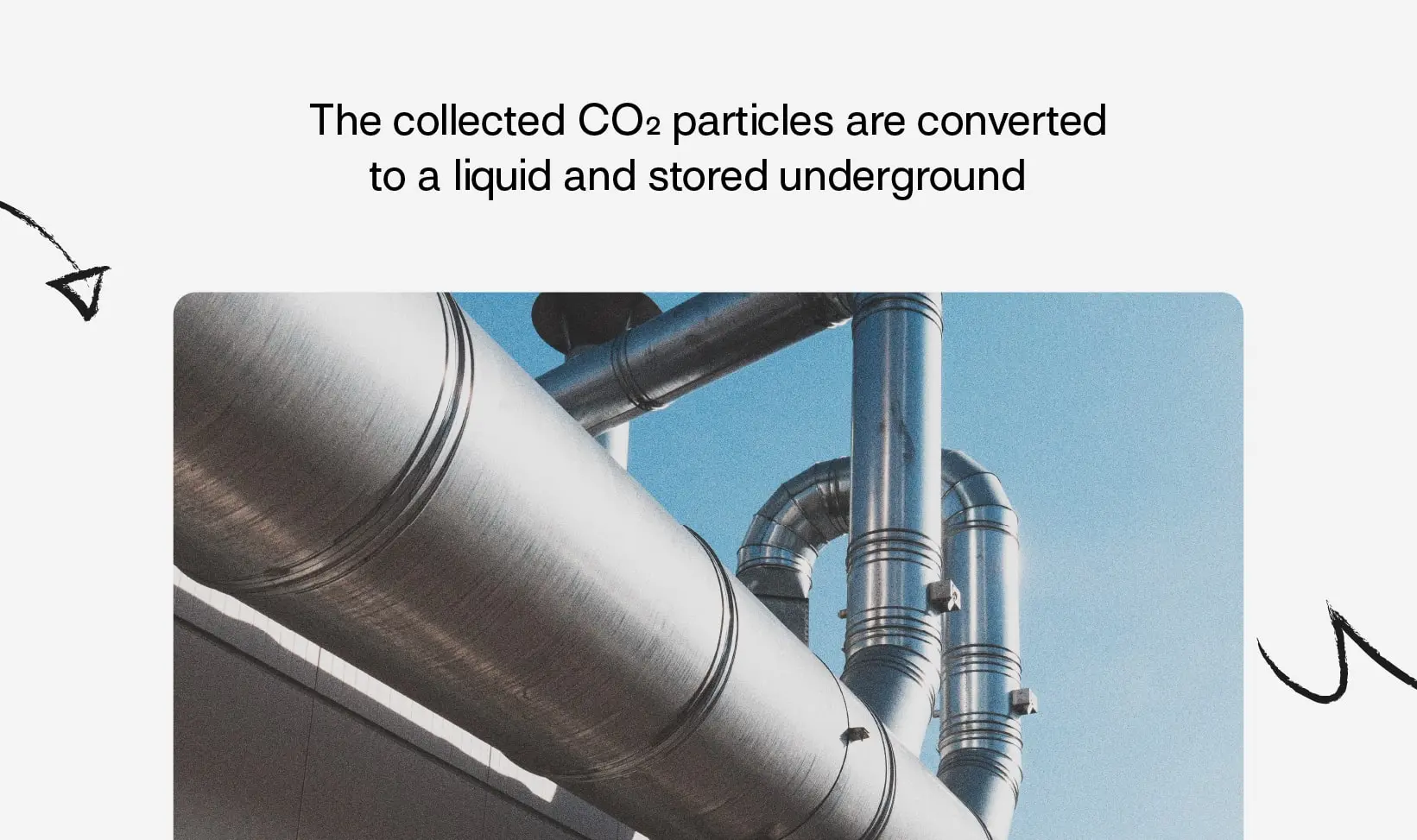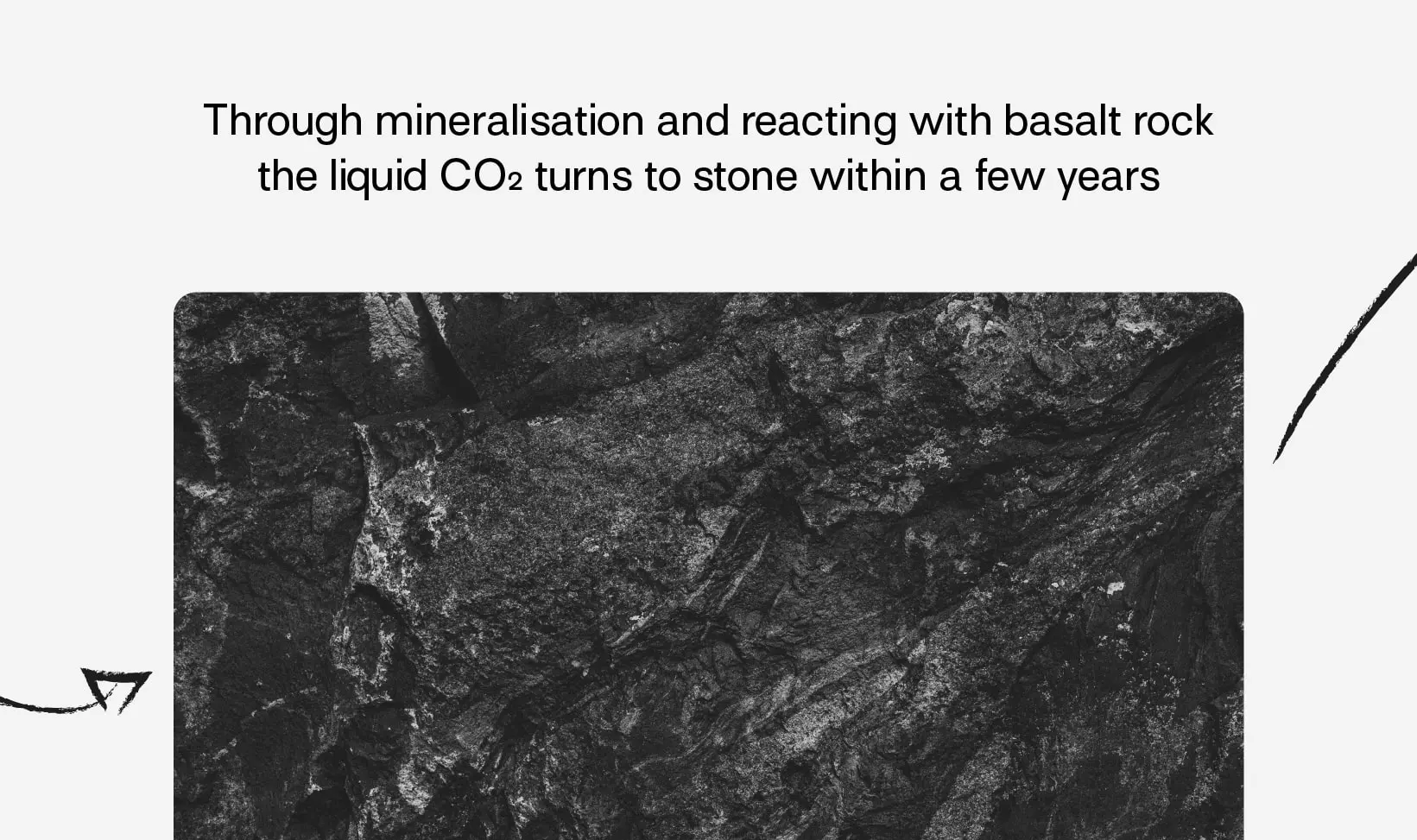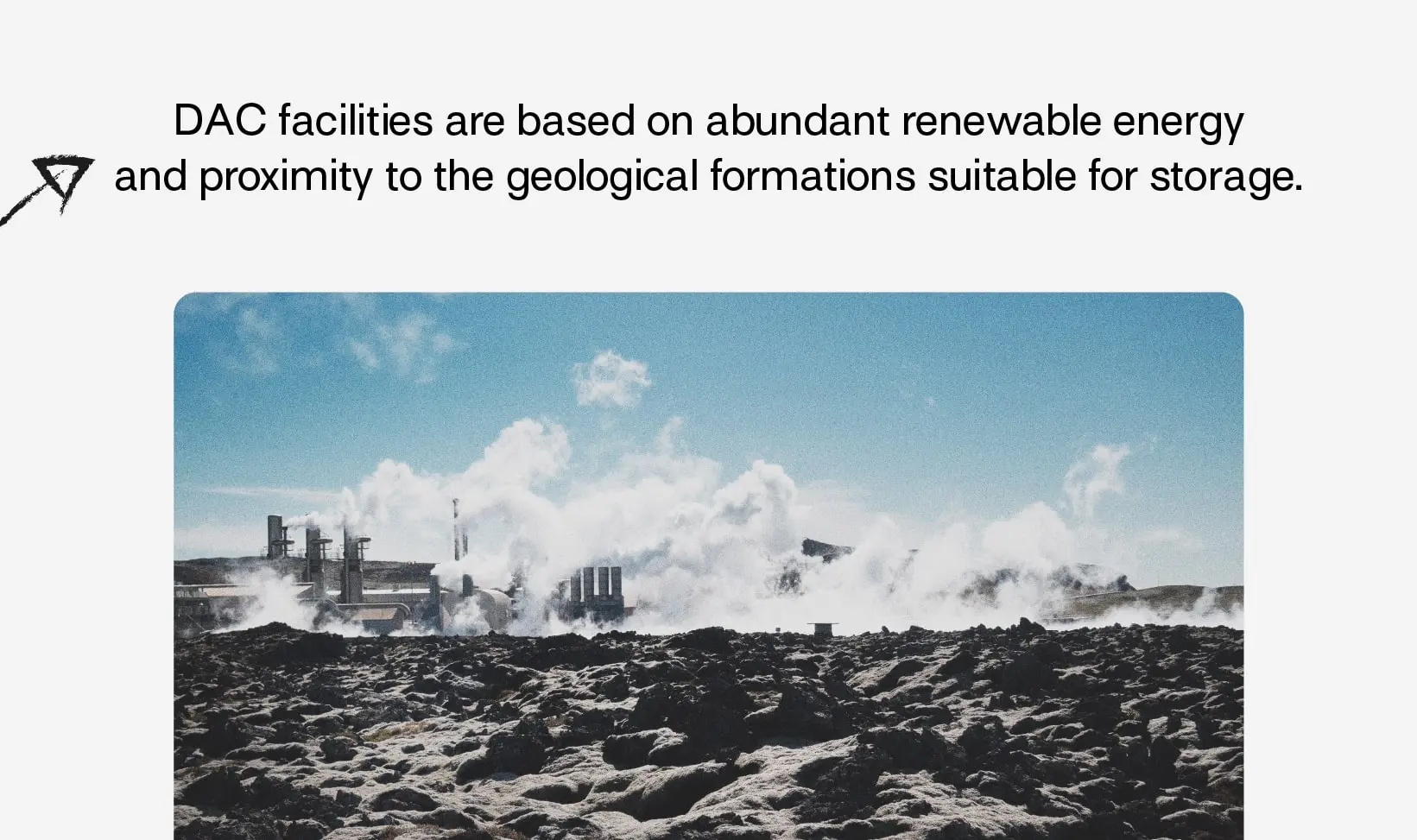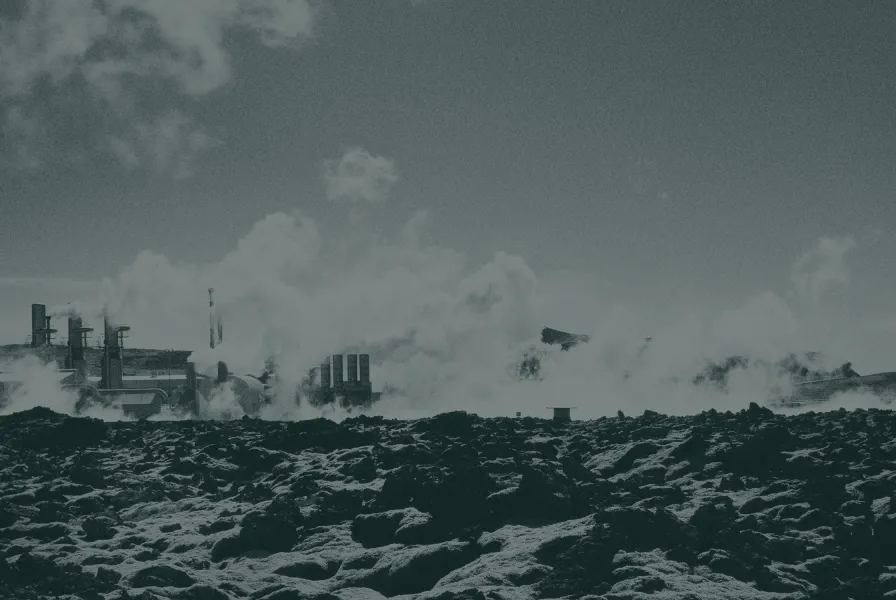Overview
Direct air capture (DAC) is a chemical process to capture ambient CO₂ from the atmosphere. Captured CO₂ is then transported and stored underground in disused gas fields or in specific geological formations where it mineralizes in a reaction with the surrounding rocks.
DAC involves five basic steps: 1. Getting large volume of air in contact with sorbents (using huge fans for example) 2. capturing CO₂ with a liquid or solid sorbent 3. regeneration of the sorbent with heat and/or pressure 4. compressing and transporting CO₂ to the storage site 5. injection in geological storage
Steps 1, 3 and 4 all require relatively large amounts of energy, which must mostly be renewable in order to achieve net carbon removal. This is the main downside of DAC.
Locating DAC facilities is therefore dependant on renewable energy abundance, and proximity to the geological formations suitable for storage.

